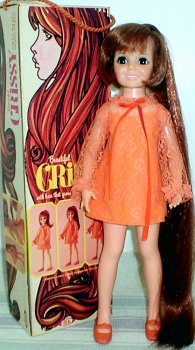
Margaret "Midge" Hadley Sherwood is a doll character in the Barbie line of toys by Mattel that was first released in 1963. She was marketed as Barbie's best friend.
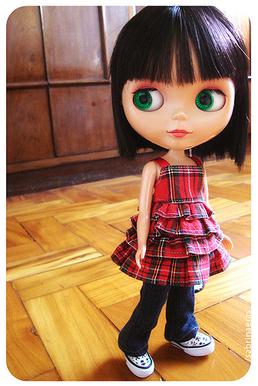
Blythe is a fashion doll, about 28 cm (11 inch) tall, with an oversized head and large eyes that change color with the pull of a string. It was created in 1972 and was initially only sold for one year in the United States by toy company Kenner. In 2001, the Japanese toy company Takara began producing new editions of Blythe dolls. There is a network of hobbyists who customize the doll for resale and create clothing and shoes for Blythe. Enthusiasts share photographs of their work and other types of dolls on the Internet.

Skipper Roberts is a doll created by Mattel in 1964 to be Barbie's younger sister.
Chatty Cathy is a pull-string "talking" doll originally created by Ruth and Elliot Handler and manufactured by the Mattel toy company from 1959 to 1965. The doll was first released in stores and appeared in television commercials beginning in 1960, with a suggested retail price of $18.00, though usually priced under $10.00 in catalog advertisements. Chatty Cathy was on the market for six years and was the second most popular doll of the 1960s after Barbie.
Dollikins were dolls manufactured by Uneeda Doll Company, a company founded in 1917 by the Sklarsky family in Brooklyn, New York. Dollikins were marketed as The World's Most Posable Doll. The dolls were manufactured from 1957 to 1980. Originally, Dollikins were designed to compete with similar 18–21 inch sized dolls that were popular through the 1950s and 1960s, such as Madame Alexander's "Cissy", Ideal's "Revlon", American Character's "Toni", Deluxe Reading's "Candy" Horseman's "Sindy". Horseman's "Wonderkin" and Valentine's "Mannikin". The dolls started at 19-20" tall and featured sleepy eyes, although later versions were 12" and 6" without sleepy eyes due to the popularity of the Mattel Barbie Doll which is 11.5 inches and the Topper Dawn doll which was 6 inches. See Facebook by searching, The Dollikin Collective

Fashion dolls are dolls primarily designed to be dressed to reflect fashion trends. They are manufactured both as toys for children to play with and as collectibles for adults. The dolls are usually modeled after teen girls or adult women, though child, male, and even some non-human variants exist. Contemporary fashion dolls are typically made of vinyl or another plastic.

What's Her Face! was a line of customizable dolls that straddled the line between traditional fashion dolls and creative activity toys. Made by Mattel, the line ran from 2001–2003, and enjoyed only a modest success in a market dominated by Mattel's iconic Barbie and MGA Entertainment's Bratz dolls. Following the discontinuation of the What's Her Face! line, their body molds were used for the Wee 3 Friends line of Barbie-related dolls. Several fashion, wig, and activity packs were also released for the What's Her Face line.

Littlest Pet Shop is a toy franchise and cartoon series owned by Hasbro and currently under license with Basic Fun!. The original toy series was produced by Kenner in the early 1990s. An animated television series was made in 1995 by Sunbow Productions and Jean Chalopin Creativite et Developpement, based on the franchise.

Ideal Toy Company was an American toy company founded by Morris Michtom and his wife, Rose. During the post–World War II baby boom era, Ideal became the largest doll-making company in the United States. Their most popular dolls included Betsy Wetsy, Toni, Saucy Walker, Shirley Temple, Miss Revlon, Patti Playpal, Tammy, Thumbelina, Tiny Thumbelina, and Crissy. The company is also known for selling the Rubik's Cube.
G.I. Joe Adventure Team is a line of action figures produced by the toy company Hasbro. The line is well remembered by the inclusion of features such as "Kung-Fu Grip", "Life-Like Hair" and "Eagle Eyes".
Betsy Wetsy was a "drink-and-wet" doll originally issued by the Ideal Toy Company of New York in 1934. It was one of the most popular dolls of its kind in the Post–World War II baby boom era.
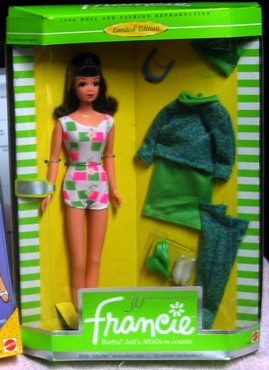
Francie Fairchild is a fashion doll issued by Mattel from 1966 to 1976 and re-introduced in 2011. Marketed as "Barbie's MODern cousin" from England, the doll had an extensive line of "mod"-style clothing, often employing bright colors and geometric patterns similar to fashions associated with Carnaby Street in the late 1960s to early 1970s. At 11¼ inches tall, the Francie doll was shorter than Barbie, but taller than Skipper, making the character presumably between the two in age.
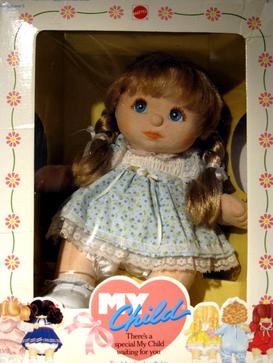
My Child dolls are a toy made by Mattel from 1985-1988. Most had felt "skin" on their heads although some had vinyl skin.
Tressy was an American fashion doll with a feature to adjust the length of its hair. Tressy was first produced by American Character Doll Company in the 1960s and later by Ideal Toy Company in the 1970s. The doll was invented and patented by modern furniture designer Jesse Dean and his wife, Diana.
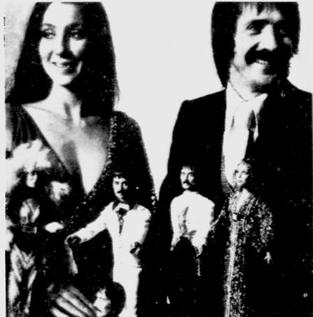
The Sonny & Cher dolls were a collection of 12-¼ inch high celebrity doll likenesses of pop rock duo Sonny & Cher. The line was released by Mego Corporation in 1976. The release of these fashion dolls coincided with the popularity of The Sonny & Cher Show prime time variety TV show.
The Barbie Basics is a line of collector's edition Barbie dolls. They were created by Mattel designer Bill Greening and were introduced in late 2009 to be officially released in the spring of 2010.
Baby Face is an American brand of baby dolls that were manufactured by Galoob in 1990-1991. They were designed by toy inventor Mel Birnkrant.
The American Character Doll Company was an American toy company specializing in dolls. Their most popular dolls included "Tiny Tears," "Tressy," "Butterball Doll", "Sweet Sue," and "Toodles." Founded in 1919, the company's fortunes peaked in the mid-20th century, as they sold millions of dolls exclusively to retailers and mail-order houses such as Sears and Montgomery Ward. The company was the first to produce mass-marketed rubber dolls in the United States. American Character Dolls went bankrupt in 1968, with their assets acquired by the Ideal Toy Company.
